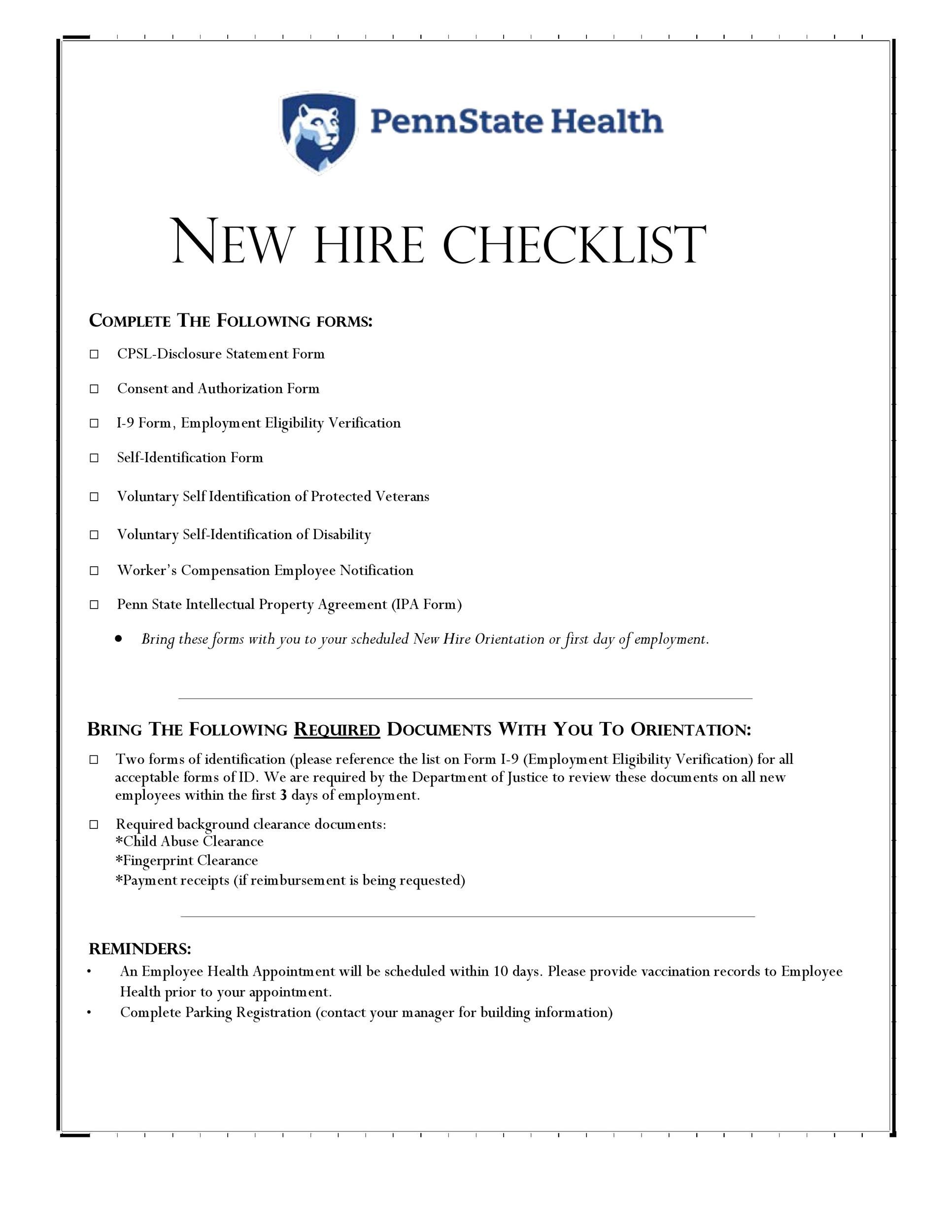Guide to Completing Full-Time Job Medical Benefits Paperwork

Applying for full-time job benefits, especially medical benefits, can seem like a daunting task. With the proper guidance, it becomes straightforward. This comprehensive guide walks through the steps needed to complete your medical benefits paperwork efficiently, ensuring you maximize your healthcare coverage. Let's dive into understanding the intricacies of employer-sponsored health plans.
Understanding Your Health Insurance Plan

The first step in the process is understanding the types of health insurance plans your employer might offer:
- Health Maintenance Organizations (HMO): Requires you to have a primary care physician (PCP) within the network for referrals to specialists.
- Preferred Provider Organizations (PPO): Allows for out-of-network care but at a higher cost than in-network services.
- Point of Service (POS): A hybrid of HMO and PPO, where referrals are needed for specialist visits, but out-of-network care is allowed with higher co-payments.
- Exclusive Provider Organizations (EPO): Similar to an HMO, except you have no coverage for out-of-network services unless it's an emergency.
- High Deductible Health Plans (HDHP): Offers lower premiums but higher out-of-pocket costs until the deductible is met, often paired with Health Savings Accounts (HSA).
👉 Note: Reviewing plan options is crucial because each type affects your out-of-pocket costs, coverage, and provider networks differently.
The Enrollment Process

Here’s how you can navigate the enrollment process for your medical benefits:
- Identify the Open Enrollment Period: This is typically the time of year when changes or additions to employee benefits can be made.
- Review All Plan Options: Look over the details of each available plan, focusing on:
- Co-pay structure
- Deductibles
- Out-of-pocket maximums
- Premium costs
- Network coverage
- Contact HR: For any questions or if you need to add or remove dependents, your Human Resources department will provide the necessary guidance.
- Complete Enrollment Forms:
- Fill out the appropriate forms accurately.
- Ensure all required documentation is attached.
- Submit Your Forms: Follow the submission instructions provided by HR, whether online or in-person.
| Health Plan | Pros | Cons |
|---|---|---|
| HMO | No out-of-network care to worry about. Lower premiums. | Requires referrals, limited provider networks. |
| PPO | More flexibility with in-network and out-of-network care. No referrals needed. | Higher premiums, higher out-of-network costs. |

Adding Dependents to Your Plan

Here’s a step-by-step guide to including dependents:
- Determine Eligibility: Understand who can be considered a dependent (e.g., spouse, children).
- Gather Documentation:
- Birth certificates
- Marriage certificates
- Adoption papers
- Any relevant legal documents
- Select Dependents: Choose which family members to add, keeping cost considerations in mind.
- Fill Out Additional Forms:
- Include dependents in your health plan by completing additional sections or forms as needed.
- Submit Documentation: Ensure HR has all the required paperwork for a seamless process.
🔍 Note: If your dependents have insurance from other sources, such as a spouse’s employer, consider your options carefully, as coordinating benefits can be complex.
Troubleshooting Common Issues

During the process, you might encounter some common issues:
- Missing Documentation: Ensure all required documents are attached to avoid delays.
- Incorrect Information: Double-check all provided information to prevent rejections.
- Delays in Processing: Follow up with HR if your benefits haven't started as expected.
Addressing these promptly can prevent any hiccups in coverage.
In summary, completing your full-time job medical benefits paperwork involves understanding the plan options, enrolling correctly, managing dependent coverage, and troubleshooting any arising issues. Remember, knowledge is power when it comes to securing the best possible healthcare benefits for yourself and your family.
What if my dependent has other insurance?

+
If your dependent is covered by another plan, you’ll need to coordinate benefits to determine which plan is primary and secondary. This process ensures maximum coverage with minimal out-of-pocket costs.
Can I change my health plan mid-year?

+
Generally, mid-year changes are not allowed unless you experience a qualifying life event like marriage, birth of a child, or loss of other insurance. Check with your HR department for specific policies.
What if I miss the open enrollment period?

+
If you miss the open enrollment, you can still enroll if you experience a qualifying life event. Otherwise, you’ll have to wait for the next open enrollment period to make changes to your health plan.



